#Porfirio Rubirosa
Explore tagged Tumblr posts
Text


you learn something new everyday i guess
#he also raced in lemans#sebring#and would’ve raced in one f1 race if he hadn’t fallen ill#porfirio rubirosa
5 notes
·
View notes
Text
Oggi, 22 agosto, nell'anniversario della nascita di Francesco Di Giacomo (1947-2014), Jennà Romano presenta la sua reinterpretazione di "Non Mi Rompete" con il prezioso ausilio del cantautore neo-dadaista e dylaniano Porfirio Rubirosa.
Due dei più interessanti artisti dei nostri giorni rendono omaggio a un classico del Banco del Mutuo Soccorso, originariamente inciso nel 1973, rivisitandolo con un approccio contemporaneo, ma rispettoso dell'atmosfera onirica, cullante, escapista e fiabesca dell'originale.
Il video, in linea con l'interpretazione musicale e canora, ci riporta a un mondo rurale che è al tempo stesso naturale, concreto e sognante.
L'arrangiamento delicato e riflessivo nella ripresa abbandona la maestosità della cori della versione originale per esplorare una dimensione più intima rendendo giusto onore al messaggio senza tempo di Francesco Di Giacomo.
Finale molto rock.
Alla batteria Vincenzo Gionta.
Il mastering è di Pietro Caramelli.
Non perdetevelo.
youtube
2 notes
·
View notes
Text

Murder is My Dish (1957) is an early entry in the Chester Drum (aka Drum Beat) by Stephen Marlowe (aka Milton Lesser). Drum is a private eye with an FBI background who often gets involved in foreign intrigue. In this one his pursuit of the killers of a colleague takes him to a fictional country very much based on the Dominican Republic under the rule of the dictator Rafael Trujillo. One of his antagonists is modeled on the once-notorious Porfirio Rubirosa, a gigolo with numerous celebrity wives and ties to shady fixers and killers -- a figure much written of in the men's magazines of the time. Anyway, Drum ends up with the manuscript of an explosive expose of the dictatorship and hopes of avenging his friend by killing the dictator's head goon. His ability to maneuver amidst the local power players seems a little implausible and Marlowe uses the dictator's crazy daughter both to meet an apparent quota of titillation and as a dea ex machina to eliminate Drum's main enemy. This is no masterpiece but I dig this continuation of the hard-boiled genre and especially appreciate the bloat-free narratives of this era. Like most paperback originals of the 1950s, this gets the job done in under 200 pages and doesn't feel like it's missing anything important. Then again, I don't feel the modern urge to know why a protagonist chooses a particular job, chooses to get up in the morning, or simply is who he or she is -- but I'll leave it at that before I sound even more like the old man yelling at the cloud. I like older, terser pop fiction and I'll try to honor them by writing terse reviews going forward.
#1950s#stephen marlowe#milton lesser#pulp fiction#paperback original#fawcett gold medal#private eyes#hardboiled#chester drum
42 notes
·
View notes
Text
Okay I am still chewing over how to express it but I think I'm deciding that my personal headcanon is Julian Bashir obsessed not with James Bond, but with the man on whom Ian Fleming may have based the character: Porfirio Rubirosa.
Rubi was a diplomat, an assassin for Dominican dictator Trujillo (or at least suspected to be), a playboy, an athlete, and an overall international sensation.
Trujillo said of Rubi, "He’s an excellent diplomat because women like him and because he is a good liar." I wonder if that's what teenage Julian wanted to be- and maybe he wouldn't have wanted to have to be a good liar if he had the choice, but it became a requirement for survival.
Was Julian, who wanted to connect with others but was terrified of his own genetics, drawn to the fact that Rubi was sterile and couldn't have children, and was always moving around and didn't settle down, and still was wanted by everyone?
The world demands whiteness, and Rubi had a nose job and chemical skin lightening. He said at one point that he had done it not because he liked the look, but "because you like it." Could Julian see himself in a brown body altered to increase its cultural capital and mobility in the world?
Rubi said, "It’s one of my fundamental principles: I would prefer risking everything, instead of being bored." Did a Julian who wanted adventure and frontier medicine in the furthest reaches of space at the risk of discovery relate to that?
There's a story that as a young child Porfirio Rubirosa was handed a violin and told to play it. When he protested he did not know how, his teacher instructed him, "Pretend."
James Bond moves through a dangerous world with ease. From a distance, it seems that Rubi did too- if you can ignore the structural racism, the tense relationship with Trujillo who at times threatened his life, and the constant need to publicly perform the role of Porfirio Rubirosa. What would it mean if that was the role model of masculinity that Julian chose?
44 notes
·
View notes
Photo


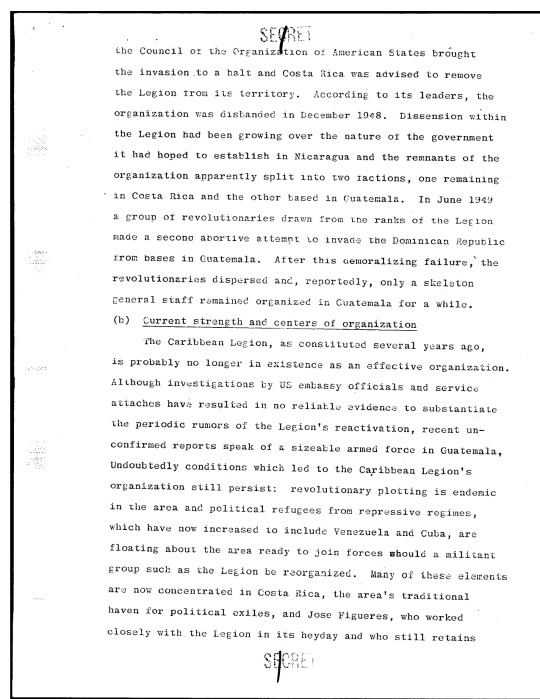
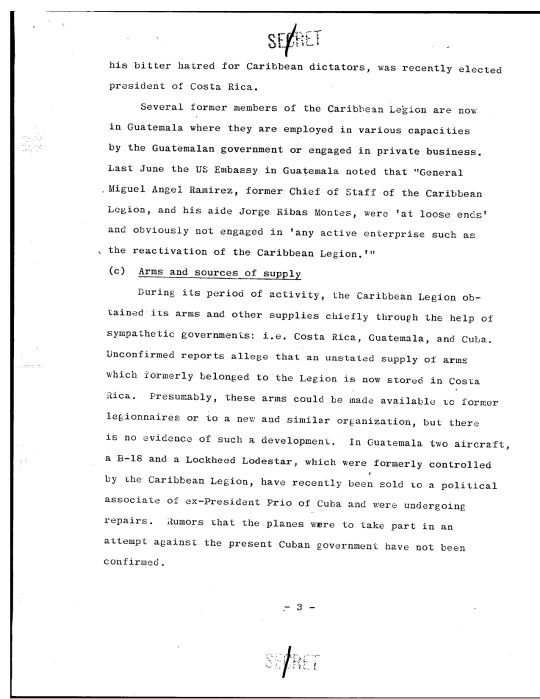




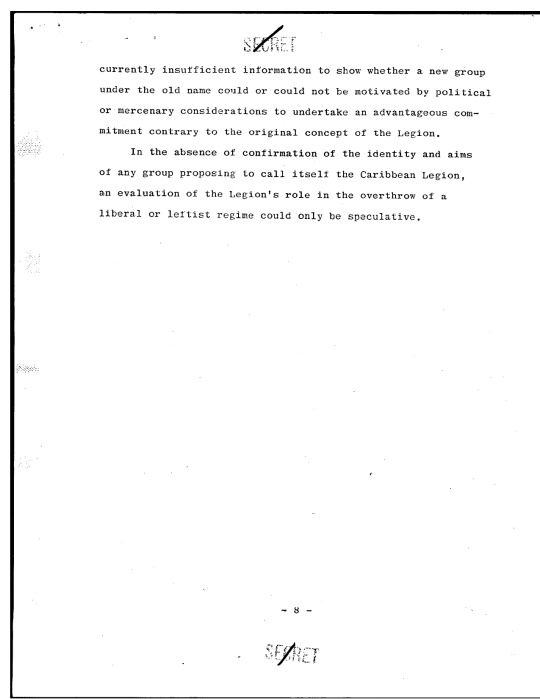
This series has repeatedly made reference to obscure events in the Dominican Republic from 1961 to 1966 which culminated in an American military invasion. They are relatively unknown and appear murky to outsiders. They united the CIA, the non-violent section of the civil rights movement, and a group of labour movement figures with links to Norman Thomas' post-Eugene Debs Socialist Party of America, the Democratic Socialist Party of today, and the Neoconservative movement that planned the Iraq War of 2003. The next two (maybe three) parts of the series will hopefully elucidate some of these events for readers. The previous part, Part 5, can be read here.
1965 was the fifth time America invaded the Dominican Republic. The fourth was in 1916, initiating an occupation that went on until 1924. America also controlled the nation's foreign trade from 1904 to 1947, collecting 50% of its revenue by heavily taxing its people on imports in order to pay off European powers with Citibank getting a commission to do the counting. These events bookended the dictatorship of Rafael Trujillo, 1930 to 1961. This resulted in a weak state unable to defend itself or the foreign corporations who wanted to invest in it.
Trujillo's government was a revolution of sorts because he directly took his methods from the mafia to govern. He'd spent years as a plantation overseer by day and gang leader by night, then joined the American-trained Dominican police and became an army officer. He learned how to use violence and manipulation to get what he wanted as well as how to pleas foreigners. In one case, he'd been sent by the occupiers to deal with a guerilla army in the interior. He was so successful that the American troops covered the reports of rapes and tortures he committed while doing so. As one of his trainers said, "He thinks just like a marine!" When the Americans withdrew, he retreated to a former castle that served as a military base, building up power until he could take advantage of a crisis and overthrow the government. Once in power, he set to creating state capacity for his rule by shaking down local industries one by one, collecting revenue and inserting loyalists into their leadership while allowing them the benefits of state backing through investment and coordination. He was so successful that he was the longest serving leader in the Caribbean's history at the time of his death.
Trujillo used a similar system of creating win-win situations to persuade American diplomats and investors to support him. He went on a charm offensive, building a tourism sector internally and using his one-time son-in-law, playboy Porfirio Rubirosa, as an ambassador and press officer. Rubirosa was not only wildly charismatic, he was also reported by Truman Capote to have an eleven inch penis. After divorcing Trujillo's daughter, he married two French actresses and the two richest women in the world back to back, making bank on his divorce settlements. Like much of the Dominican Republic's elite, he lived a charmed life, racing/crashing Ferraris and airplanes (including a B-25 bomber) internationally. Both he and his former father-in-law lived part of the year in lavish apartments in New York City, racing Ferraris and buying out brothels. Some of the money came from Dominican visas that Rubirosa sold to German Jews fleeing the Holocaust and Spaniards fleeing Franco. Trujillo had retreated there to convince the world that he had changed his ways after spearheading the massacre of tens of thousands of Haitians in his country in 1937. In the shadows he worked to mastermind a comeback, making it seem like his people organically wanted him again in the 1942 show elections. He won 100% of the vote.
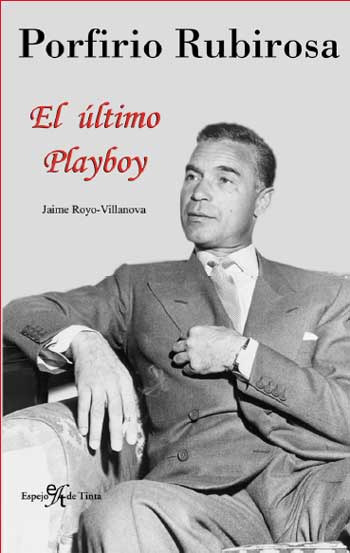
By 1947, the Cold War was on. Most people forget that this was a process initiated by a strong and muscular liberalism that had just defeated fascism and felt it could do the same to communism. Liberal intelligentsia in American government had undertaken a decade-long march through the institutions and created a new setup for the global economy with the World Bank, the International Monetary Fund, the World Trade Organization, the United Nations, and Bretton Woods. It seemed to many in the Third World that America had turned over a new leaf and was ready to support democracy abroad. For the entrenched right wing forces in Latin America, however, it seemed like business as usual. Just as he had declared war on the Nazis, Trujillo now worked to find a communist menace to kill to serve American interests. He used his agents to create a fake Marxist-Leninist party as opposition to run against him in the 1947 election. After picking up 92% of the vote, he used their supposed allegiance to Moscow to crack down on them, winning himself plaudits in Congress.
For many in Latin America, this was the last straw. In Cuba, 1200 men came together in what was termed the Caribbean Legion. Mostly exiles from Latin American dictatorships and sympathizers, they were ready to kill and die for liberalism. Some had fought in the Spanish Civil War and escaped death at the hands of the Franco regime when Trujillo had chosen to accept refugees from Europe as part of his developmental push, only to find their political allegiance was to socialism above all. They were backed by the elected leader of Cuba, Ramon Grau, who saw them as a way to topple a nearby enemy. They also pulled support from the president of Guatemala, Juan Jose Arevalo, who like his successor Jacobo Arbenz was an anti-communist liberal. Among the membership was Carlos Prio, the next president of Cuba, Juan Bosch, the most famous anti-Trujillo Dominican, Romulo Betancourt, a future president of Venezuela, Jose Figueres, the next president of Costa Rica, and a law student/basketball player at Havana University named Fidel Castro.
Figueres was a strange figure, perhaps the most fascinating of the Cold War. A plantation owner, he described himself as a "farmer-socialist". He invested his money in improving the living conditions of his workers, certain that it would make them more productive. He came to power with the help of the Legion in a very odd way, in a civil war that belongs with those pictures of Wikipedia where both sides are in odd alliances, with the right wing Nicaraguan dictatorship backing the Catholic Church and the Communist Party against Figueres' oligarch allies, supported by both America and the Guatemalan government it would later overthrow. Figueres immediately defenestrated those allies and took power for himself despite his talk of democracy, abolishing the army, nationalizing all banks, guaranteeing public education, giving citizenship to black migrants, giving women the vote, instituting social welfare, and banning the Communist Party. He helped establish the School of the Americas where the American military taught torture techniques and broke off relations with every American-backed dictator in the region. At one point, he was the subject of the only shooting war fought between different branches of the American government, when his State Department friends gave him planes to fight ones provided to Nicaragua by the CIA.

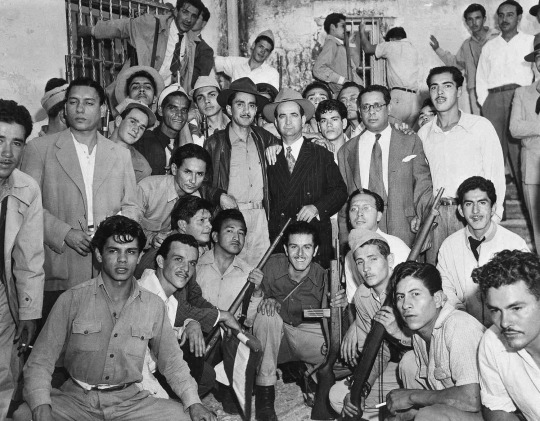
The Caribbean Legion would not have any other successes because it faced a classic problem of liberals during the Cold War: its membership was supportive of social reform, and that made the American government suspect they were secretly communists in disguise. The Legion had wanted to overthrow Trujillo, but the Americans convinced Grau to arrest them and confiscate their weapons. Castro managed to escape by jumping off the ship they were captured on and swimming to shore. Even as doors closed for the Legion, however, others opened. Ironically, it was another section of the American government that would save them. Their patron Figueres' liberal anti-communism had its fans in the CIA, which as an organization staffed largely by liberal WASPs from northeastern Ivy League universities felt that the combination would be sufficient to compete with the Soviets for hegemony among the Latin American peasantry. Figueres ended up on the CIA's payroll directly, codename HUMAIL. A lighter hand would be used for the Legion's membership, however.
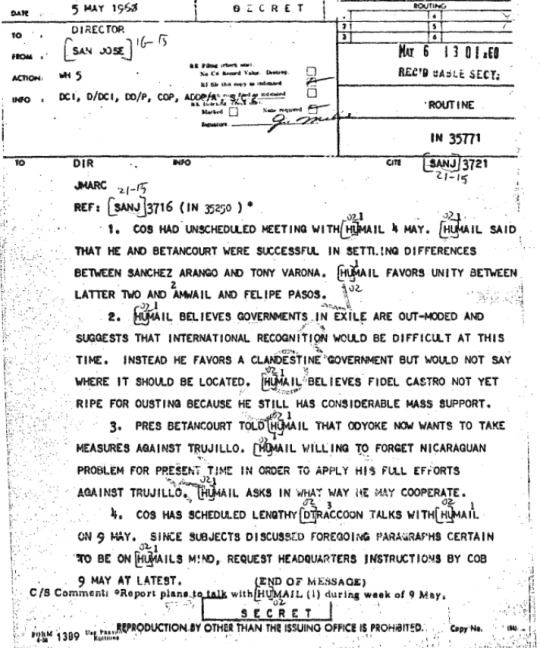
28 notes
·
View notes
Text

The original 007…. Porfirio Rubirosa. Dominican legend.
5 notes
·
View notes
Text
Still in the Limelight, on Her Own Terms

Sunday Eartha Kitt ends her run in the musical “Mimi le Duck,” and on Thursday she will be singing at the White House.Credit...Michelle V. Agins/The New York Times
By Felicia R. Lee Dec. 2, 2006
“If I had any regrets, it would mean I had not learned anything,” Eartha Kitt said, sitting in the empty New World Stages theater on 50th Street. Between performances as Madame Vallet in the Off Broadway musical “Mimi le Duck,” Ms. Kitt, who will turn 80 in January, talked about a busy year in which she was featured in the musical, appeared at the Café Carlyle and released a new album of live songs. And now, on Thursday, she will be at the White House’s Christmas tree lighting and will sing “Santa Baby” and “Have Yourself a Merry Little Christmas,” all while battling colon cancer.
Snuggled in a plush blue seat, Ms. Kitt, wearing a flowing red print robe and a pixie haircut that showcased her huge eyes, gave a short preview of one of the songs she intends to sing. For those with long memories, the invitation might seem surprising. Her most famous visit to the White House was nearly 40 years ago during another unpopular war (Vietnam); her unexpectedly pointed comments about American involvement reportedly made Lady Bird Johnson cry and nearly derailed her stage, film and singing career.
“When I was against Vietnam I was asked in the White House itself, by Mrs. Johnson, what the problem was among our young people,” Ms. Kitt explained, saying that she responded based on what she was told by youths. She had no regrets about speaking honestly, she added, even after being forced to work abroad for a number of years afterward.
So does Ms. Kitt plan on commenting on current policy? It depends on who is asking what, she replied. She does not believe in setting up a soapbox: “I think now it’s gotten somewhat out of hand, because I don’t believe in blurting out whatever you feel,” she said, referring to celebrities who have recently expressed antiwar sentiments. “Whether you believe in the war or not, we still have to support our boys.”
If she’s worried about anything concerning the visit, it’s probably stage fright. Even after all these years, she admits.
“I get so nervous,” she said. Ms. Kitt traces her anxiety back to her upbringing as a biracial child in South Carolina, rejected by both blacks and whites: “I am always afraid of being rejected. You never get away from it. I am very glad the public has made me who I am because I can feel I’m worthwhile when I hear the applause and I’m still wanted.”
She added, “I am extremely lucky to be in show business and have earned my own way with the help of the public without having to feel that I want a man to take care of me for the rest of my life.”
Does that mean she considers herself a feminist? She roared in response. “No, I don’t believe in all that nonsense,” said Ms. Kitt, who was married once and has been linked to famous men like Porfirio Rubirosa, Charles Revson and Arthur Loew Jr. “When they started that nonsense, nobody sent me roses anymore, let alone the diamond rings. I used to get furs and diamonds from men, and they’d open doors for me, lay out the red carpet. Now, I don’t even get a petal.”
Still, Ms. Kitt, whom Orson Welles once called “the most exciting woman in the world,” says she is content to be without a man. Ms. Kitt said she would probably spend her birthday quietly with her only child, Kitt Shapiro, and her two grandchildren.
“Aging is a natural process, so enjoy it,” she said, adding that she has never resorted to anything other than exercising, eating right and keeping a positive attitude to look good. “I don’t believe in chopping up my face in order to look like something I might have looked like when I was 30.”
The diagnosis of cancer in the lower part of her colon this spring came as a surprise. She found out as she prepared for surgery for carpal tunnel syndrome in both hands from constant needlepoint and boxing (which she said she had taken up for fun and exercise). When the doctors did blood work, they found she was dangerously anemic and bleeding internally.
“I advise everybody to get a colonoscopy,” Ms. Kitt said. “I was walking around with no pain at all, and I felt weak from time to time.” When the doctor told her that she had to go to the hospital right away, she recalls responding, “ ‘No, I’ve got two concerts to do.’ I only canceled one thing, and that was a private party.”
Ms. Kitt said she was not afraid of the operation to remove the cancer. “It’s like five bullet holes in my stomach,” she said and laughed. She took an oral chemotherapy medication and described herself as being at the end of her treatment. “They said you can be on this pill, and it can give you three more years of your life, and it may not; we don’t know. In three weeks time I’ll get another examination and find out if I’m O.K.”
In any case, retirement is not a word in her vocabulary, she said. “In many ways I’m still playing Catwoman,” she said, referring to her famous stint on the 1960s television series “Batman,” “no matter how old I get.”
Ms. Kitt and the cast of “Mimi le Duck,” which closes tomorrow, are recording the songs from the musical. On June 25 she is planning to appear at Carnegie Hall, singing some old standards and new tunes.
“If there’s one seat empty, I’m going to feel ‘O.K., it’s time for me to go home now,’ ” she said, gracing the empty theater with one of her familiar and long Catwoman laughs.
#Eartha Kitt#CatWoman#Mimi le Duck#Eartha Mae Keith#New York Times#Orson Welles#Felicia R. Lee#Lady Bird Johnson
1 note
·
View note
Text

Spielbank Berlin. Potsdamer Platz. Apr 2025
Auf einer meiner Sonntagmorgen-Rundfahrten. Die Zeiten der großen Casinos sind wohl vorbei. Ich zumindest kann mir nicht vorstellen, daß Literaturgenies wie Dostojewski oder Playboys wie Porfirio Rubirosa oder Omar Sharif vor solch traurigen Hütten rumstolpern, um den Verlust von Haus und Hof zu verarbeiten. Und diese komischen Wägelchen mit Besen und Mülleimer? Die stehen immer scheinbar verlassen in der Gegend rum. Wenn man aber ein erfahrener Scout ist und ein Falkenauge hat wie ich, entdeckt man nach angestrengtem Rekognoszieren schließlich irgendwo einen versteckten Krieger vom Stamme der Warnwesten-Mohikaner, der lautlos seinen geheimnisvollen Tätigkeiten – meist aufm Handy – nachgeht. Das ist wie mit den Rehkitzen. Da denkt man auch immer, die wurden von der Mutter verlassen. Kürzlich, im S-Bhf-Beusselstraße, sah ich mal eins dieser Fahrzeuge mit der vorgesehenen Besatzung. Der Fahrer ein Sub-Sahara-Afrikaner, der umständlich damit beschäftigt war, sein Wägelchen ordentlich zu parken. Der nahm schließlich einen umfangreichen Schlüsselbund zur Hand und öffnete die Tür zum ehemaligen Leitstand im Bahnhof, um einen Kumpel in Zivil einzulassen. Als ich fragte, ob ich mit reindarf, sagte er "Blacks only". Hahaha! Nee, ist natürlich ein Scherz. "Das ist privat", war in Wirklichkeit seine Antwort. Diese Dinger, diese Leitstände, die von außen wie irgendein Kabuff aussehen, sind tatsächlich voll unterkellerte Häuser mit Küche und Toiletten. Könnte man theoretisch drin wohnen. Wenn man bereit ist, vorm Stellpult zu schlafen. Wieso ich das erzähle? Wieso nicht? Sonst erleb ich ja nix. Außerdem habe ich selbst schon jede Menge Scheißjobs gehabt und bin immer sehr interessiert an den Menschen. Ich selbst allerdings habe immer mit der Wut eines Kriegers meinen Dienst verrichtet. Einen riesigen Parkplatz aus Verbundpflaster, gefühlte 3 Quadratkilometer, vom Unkraut zwischen den Ritzen befreien? Biologisch korrekt ohne Gift, nix hier Round-Up oder so, sondern nur durch mechanische Kraft? Kein Problem, hier kommt jung Herkules und wird es Euch zeigen! Kein Verpissen, sondern Kampf bis zum Letzten! Bis irgendwann der Chief antrabte und mir andere Aufgaben zuteilte, weil er um seine armen Pflastersteine fürchtete.
Hier an diesen Ort bin ich vergangenen Sonntag zurückgekehrt, mit meinem 20mm statt dem auf dem Bild verwendeten 35mm / f2. Zurückgekehrt mit dem festen Vorsatz, diesmal die Kamera geradezuhalten. Ohne Stativ geradezuhalten. Als ich endlich ankam, nachdem ich mich durch das Halbmarathon-Chaos und all die gesperrten Straßen gearbeitet hatte, stand da natürlich wieder was im Weg rum. Diesmal kein fahrbarer Mülleimer, sondern eine Hebebühne. Irgendwas ist immer. Annie Leibovitz hätte ein Vorauskommando, das alles aus dem Weg räumt und jedem, der ins Bild laufen könnte, in die Beine schießt. Die würde aber auch nicht sonen Scheiß fotografieren.
0 notes
Text
Le canzoni quasi d'amore di Jennà Romano e Porfirio Rubirosa.
Cronaca in 15 paragrafetti di un concerto per corde, voci e armonica cui ho assistito ieri.
0 notes
Text
23 ago 2023 18:09
“CARO, CHE C’È DI PEPATO STASERA?” - QUANDO A SAINT TROPEZ L’AVVOCATO SI UNIVA A GIGI RIZZI E AGLI ALTRI "AMATEUR" ITALIANI (BEPPE PIRODDI, FRANCO RAPETTI E RODOLFO PARISI), CHE FUROREGGIAVANO SULLA COSTA AZZURRA – A MILANO AL LORO TAVOLO OGNI TANTO SI AFFACCIAVA ANCHE UN GIOVANE SILVIO BERLUSCONI (“MA NON ERA AMMESSO”) - DA PORFIRIO RUBIROSA FINO ALL’EPOPEA ROMAGNOLA DI ZANZA: STORIE, VIZI E FRAGILITÀ DEI PLAYBOY TRICOLORI. DI QUELLI CHE TENNERO ALTO (ANCHE) IL TRICOLORE NON E’ RIMASTO NESSUNO. OGGI CONTANO GLI INFLUENCER. AVEVA RAGIONE FRANCO CALIFANO: SE TI VOLTI INDIETRO, TUTTO IL RESTO È NOIA… -
Estratto dell’articolo di Giangiacomo Schiavi per il Corriere della Sera
Venivano da mondi diversi e diverso era lo stile, la classe e l’eleganza, ma se c’è qualcosa che li accomuna oltre al fatto di piacere alle donne e di scambiare la notte con il giorno, è l’uso di una parola superata, quasi del tutto in disuso, triturata dal femminismo e dal Me Too: playboy.
Se Zanza da Rimini ne è la parodia nostrana, popolar romagnola, il modello che contabilizza come un flipper le conquiste e diventa, a detta della madre, «un richiamo turistico nelle spiagge dell’Adriatico» per le bellezze nordiche degli anni Ottanta, fino allo schianto nell’ultimo fatale rendez-vous , a 63 anni, nel letto con una ventitreenne, un altro è stato in Italia il titolare per antonomasia del marchio, il prototipo del seduttore che negli anni Sessanta era chiamato anche tombeur des femmes : Gigi Rizzi, uno con le stimmate dell’impresa galante e non dell’arrembaggio alle turiste per caso, tardivo e fuggevole eroe di una generazione uscita dalla guerra, ha scritto Massimo Fini, che il suo ’68 l’ha vissuto senza molotov o barricate nell’estate godereccia di Saint Tropez, alzando il tricolore sulla Madrague, la villa della più bella e desiderata donna del mondo: Brigitte Bardot.
Il sostegno di Gianni Agnelli
Nel secolo scorso playboy era un titolo impegnativo e non ancora politicamente scorretto. Quelli veri erano pochi e con caratteristiche diverse da uno come Zanza, che mai sarebbe stato ammesso nel gruppo d’assalto in Costa Azzurra, «les italiens», Rizzi, Piroddi, Rapetti e Parisi, il quartetto più ambito dal Papagayo all’Esquinade, tappe obbligate dei viveurs di tutto il mondo: non solo per il nome, ma per lo stile che vietava di mettere in piazza «la contabilità delle mutande sfilate»: loro le conquiste non le contavano, le pesavano. Solo così potevano vantare il sostegno di Gianni Agnelli, che del riserbo faceva un codice d’onore: l’Avvocato ogni tanto si univa al quartetto che spopolava sulla Croisette e domandava all’invidiatissimo Gigi: «Caro, che c’è di pepato stasera...».
Le «scuole» e gli stili di conquista
Se a Zanza dedicheranno una targa, servirebbe un albo alla memoria per quanti, come Gigi Rizzi, hanno intaccato con giovanile esuberanza il mito di Porfirio Rubirosa rilanciando quello, made in Italy, dell’ineguagliabile Rodolfo Valentino. Non erano tanti e si dividevano in piccole squadre, i milanesi, i genovesi e i romani, ricchissimi i primi, scatenati i secondi, fascinosi i terzi.
(...)
I locali giusti
Milano era la scuola più selettiva: negli anni Sessanta la città del boom, dei cumenda e del lavoro aveva in Brera e nel caraibico Giamaica il luogo simbolico da onorare e i playboy navigavano tra Cova e il Baretto, prima del tuffo al Bang Bang o al Charlie Max, dove suonava Augusto Righetti. Mina era la voce nuova, la Vanoni quella sensuale, il regno del cheek to cheek era lo Stork di piazza Diaz, amato da quelli della vecchia guardia come Gigi Perez. I playboy si chiamavano Cesare e Marco Spadaccini, che viaggiavano in Miura o in Ferrari, grande successo riscuoteva il gioielliere surfista Pederzani, new entry era un politico di destra, il barone nero Tomaso Staiti di Cuddia, che vantava cultura e storie galanti con Rosa Fumetto, Marisa Allasio e Capucine. Da Genova a Milano si erano trasferiti anche Rizzi e Beppe Piroddi, dopo le precoci incursioni al Carillon di Portofino e al Pirate di Cap Martin: avevano il tavolo fisso tra le modelle alla Torre di Pisa dove ogni tanto si affacciava anche un giovane Silvio Berlusconi («ma non era ammesso», ricorderà perfidamente il barone Staiti).
Gigi Rizzi e la storia d’amore con BB
A ventidue anni Gigi Rizzi era già un top di gamma, accoppiato a bellezze che pietrificavano: Patrizia Gallieni, Anna Mucci, Isa Stoppi, la modella che il fotografo Avedon definì più bella del modo, «con due laghi al posto degli occhi»... Nel ’67 inaugurò con Piroddi il Number One , con i primi disc jokey e il giovane Teo Teocoli ad aprire le danze. A Parigi aveva il lasciapassare da Regine Zilberger, la signora del New Jimmi’s, dove fece il debutto in compagnia di Natalie Delon: ai tavoli accanto a lui c’erano Aristotele Onassis con la Callas e Porfirio Rubirosa con Odile Rodin. Se andava a Londra le tappe erano Annabel’s e il Dolly’s: serate con Polansky e Sharon Tate, compagna del momento Fiona Lewis, mentre Piroddi stava con Jaqueline Bisset. Poi tra un Cristal e un Dom Perignon il giovanotto si giocava una fortuna nelle infernali puntate di chemin de fer.
Regine di bellezza
Com’era e cos’era la vita da playboy è possibile che qualcuno ancora lo ricordi, da Liuba Rizzoli a Marisa Berenson, monumenti di bellezza insieme a Elsa Martinelli, una delle regine di Saint Tropez. Di sicuro il fascino, l’esibizionismo, il narcisismo, la folle illusione che tutto fosse possibile per Gigi Rizzi toccò la vetta una sera di giugno, in quel ‘68 che annunciava la fine di un’epoca.
L’uomo più invidiato del mondo
La love story con Brigitte Bardot fu qualcosa di pazzesco, una bomba: un giovane italiano si sostituiva a Gunther Sachs, playboy miliardario erede della dinastia Von Opel, l’uomo che lanciava rose rosse dall’elicottero per annunciare alla Bardot il suo arrivo. Gigi ballava il flamenco sul tavolo con sfacciata esuberanza, girava a piedi nudi, giocava con le carte e con le donne. Quando la Bardot lo invitò alla Madrague e mandò una Rolls Royce nel suo albergo a ritirare gli abiti di ricambio, aveva appena 24 anni. Per tre mesi diventò l’uomo più invidiato del mondo.
Tra vizi, fragilità ed errori
«È stato detto che Gigi è sempre e solo l’ex di Brigitte», ha scritto Olghina di Robilant, musa dolcevitiera di quel gruppo. «La deformazione giornalistica va capovolta. Direi che la Bardot fu solo una ex di Gigi. Una fra tante, famose quanto lei...».
La sua storia, diversamente da quella di Zanza, è una metafora sulla vita e anche sul destino del playboy. Rivela vizi, fragilità, errori, il senso dell’onnipotenza e del vuoto, che finisce spesso in solitudini da affogare nell’alcol o nella cocaina: Gigi Rizzi ha avuto tutto, ha perso tutto, si è eclissato, ha cercato di cambiar vita, si è riconvertito agricoltore in Argentina, si è sposato e risposato, è caduto ed è riemerso, è stato in una comunità per tossici e alcolisti e non si è vergognato di dirlo.
(...) Dieci anni fa è morto durante la sua festa di compleanno, proprio a Saint Tropez, dove tutto era cominciato. Quasi un segno del destino. Di quel quartetto che si onorava del titolo di «les italiens» non è rimasto nessuno. Game over, anche per i playboy. Oggi contano gli influencer. Forse aveva ragione Franco Califano: se ti volti indietro, tutto il resto è noia.
1 note
·
View note
Text

44 notes
·
View notes
Photo

Fun threesome at the exclusive Mocambo nightclub – or should that be “fun romantic triangle?” Suavely handsome Dominican diplomat, racing car driver, international jetsetter and playboy Porfirio Rubirosa (1909 - 1965) with female admirers, Hungarian glamourpuss Zsa Zsa Gabor (1917- 2016) and sex kitten nonpareil Eartha Kitt (1927 - 2008). Rubirosa was involved with both women – perhaps they overlapped? One can only imagine how Gabor must have seethed at Rubirosa reaching across her to light Kitt’s cigarette (and ruining this paparazzi shot!). Legendary for his sexual prowess (Rubirosa was allegedly packing an uncircumcised café con leche-coloured foot-long homewrecker) and his relationships with some of the world’s most famous and desirable women (incorporating Rita Hayworth, Veronica Lake, Kim Novak, Maria Montez, Judy Garland, Joan Crawford and Dorothy Dandridge), even his death was romantic and dashing: he died aged 56, crashing his silver Ferrari into a tree in Paris.
Let’s face it: the puritanical, hypocritical and homophobic hellsite Tumblr has become a dying platform since it banned adult content in December 2018. I post here less and less. Follow me instead on Instagram, Twitter, Facebook or on my blog. Fuck Tumblr!
#eartha kitt#Porfirio Rubirosa#zsa zsa gabor#mocambo#1950s#cafe society#nightclub#glamour#jet set#sin set#atomic era#sex kitten
4 notes
·
View notes
Photo
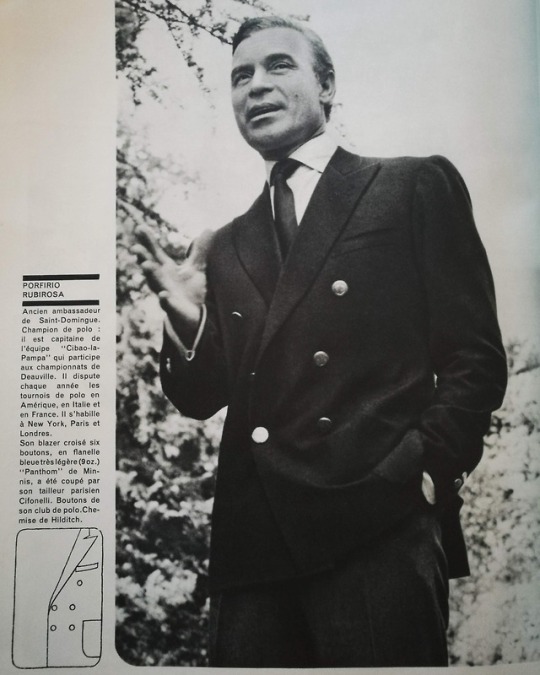
Cifonelli.
36 notes
·
View notes











